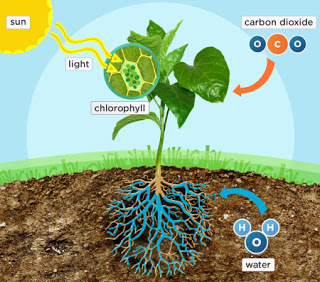C4 Plants
What are C4 plants?
Basically they are plants that undertake photosynthesis in a different way enabling them to continue to grow during hot and dry conditions. To better understand this lets quickly recap on photosynthesis.
All plants require carbon dioxide from the atmosphere in order for photosynthesis to occur and plants obtain this carbon dioxide via tiny openings on the underside of the plant leaf, these tiny openings are called stomata. The stomata also provide the exit of H2O from the plant.

When soil water resources are low small openings usually on the underside of the leaves called the stomata close to reduce the loss of water from the plant. This also reduces the incoming carbon dioxide as plants absorb CO2 through these same stomata. Without C02 plants cannot photosynthesis and growth halts. When a plant is wilting it has reached this point.
Some plants have adapted to overcome this and one particular group of grasses and tropical plants, the C4 plants, are able to close stomatal pores in order to reduce water loss whilst still obtaining carbon dioxide thereby maintaining photosynthesis in hot and dry conditions.
C4 Plants, Examples, and C4 Families
They are found only in the angiosperms with about 8,000 members in 17 families equivalent to about 3% of all land plants. Combined, the grasses (family Poaceae or Gramineae) and sedges (family Cyperaceae) comprise roughly 79% of the total number of C4 species (Simpson 2010).
Examples of C4 species are the economically important crops corn or maize (Zea mays), sugarcane (Saccharum officinarum), sorghum (Sorghum bicolor), and millets.
Other examples include, couch or bermuda grass (Cynodon dactylon), barnyard grass (Echinocloa spp.), goosegrass (Eleusine indica), Johnson grass (Sorghum halepense), cogon (Imperata cylindrica), common purslane or alusiman (Portulaca oleracea), crabgrass (Digitaria sanguinalis), several species of pigweed (Amaranthus spp.), carabao grass (Paspalum conjugatum), itchgrass (Rottboellia exaltata), and Russian thistle or tumbleweed (Salsola kali) (Llewellyn 2000; Moore et al. 2003).
We are working on a model to use these plants to produce seed free biomass for mulching an establishing forest farm.
Hi! I am a robot. I just upvoted you! I found similar content that readers might be interested in:
http://balkanecologyproject.blogspot.com/2015/08/c4-photosynthesis.html
I had never heard of this, thanks. Hope to hear more about the biomass model.